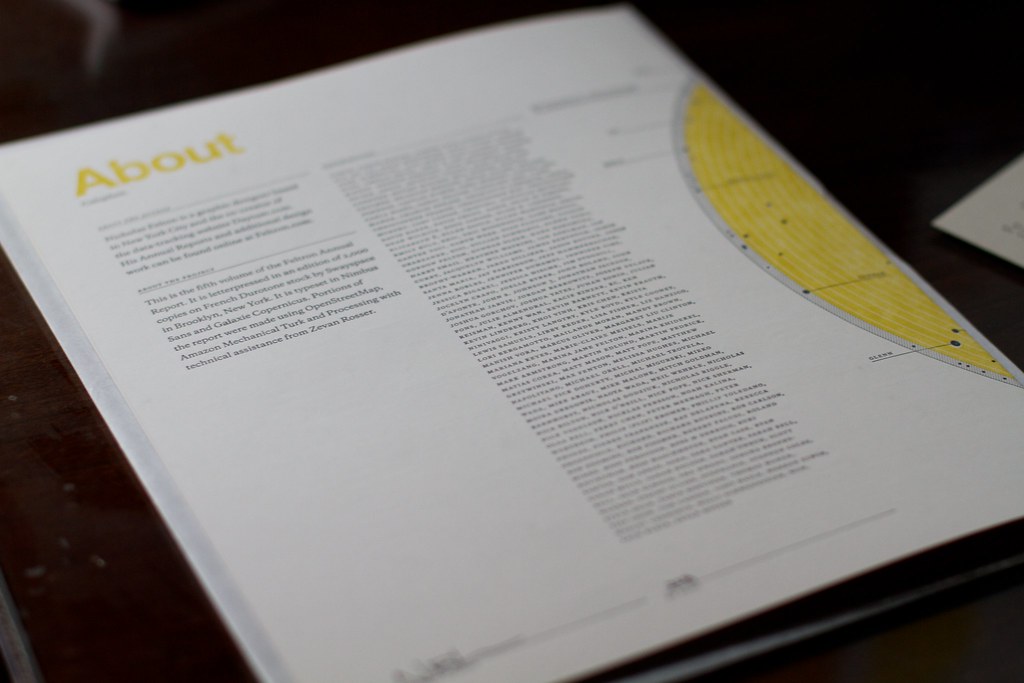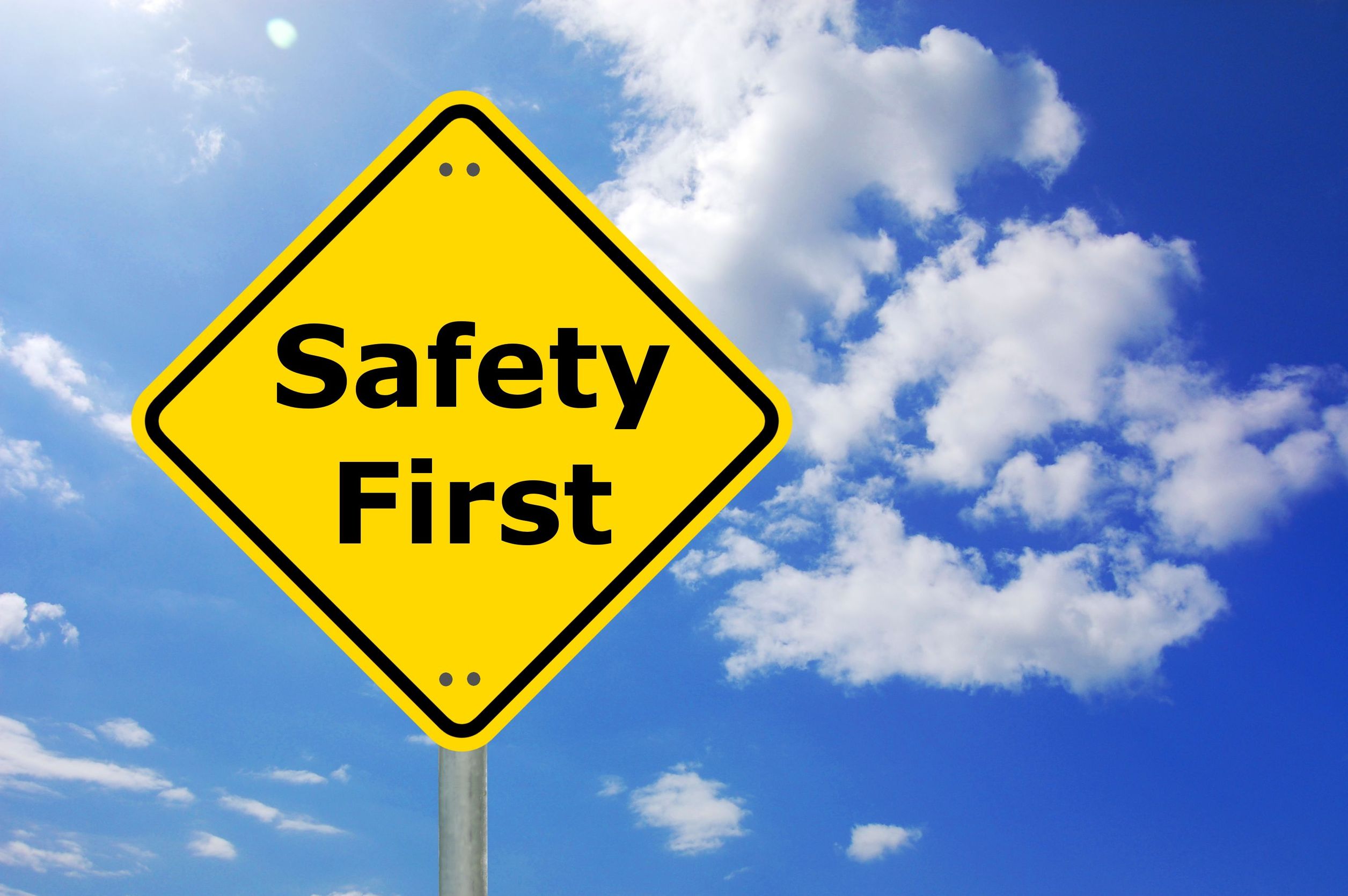
The journey of buying a used car can often feel like navigating a complex landscape, fraught with uncertainties and the lingering fear of unforeseen problems. What appears on the surface to be a pristine vehicle might, in reality, harbor a convoluted, troubled past, meticulously hidden from the casual observer. Without employing the right investigative tools and possessing a discerning eye, buyers risk unknowingly purchasing a car burdened with serious underlying issues—ranging from deceptively rolled-back mileage to undisclosed accidents, or even a salvaged, flood-damaged, or rebuilt title—any of which could critically compromise safety, drain finances, and ultimately erode one’s peace of mind.
This is precisely where the Vehicle Identification Number, or VIN, emerges as an indispensable ally in the pursuit of a sound automotive investment. Every car and truck meticulously manufactured after 1980 has been indelibly stamped with this unique, 17-digit alphanumeric code, serving as its individual, unalterable fingerprint. It stands as the singular key that unlocks a vehicle’s entire historical narrative, transforming a potentially perilous transaction into an eminently informed and secure decision for any astute buyer.
By simply entering this critical VIN into a trusted vehicle history report service, you gain swift access to a comprehensive array of crucial details. This immediate access can expose major warning signs and protect you from myriad costly mistakes that might otherwise go unnoticed. In the ensuing sections, we will delve into the power of the VIN, systematically exploring the multitude of critical details it can reveal about a used vehicle, elucidating what information to search for, how to interpret the findings, and underscoring why a VIN check is absolutely essential.

1. **The Unique Fingerprint: Understanding the VIN’s Core Significance**The Vehicle Identification Number, or VIN, transcends being merely a random assortment of alphanumeric characters; it functions as the unequivocal, definitive identity marker for every single automobile on the road. Each car and truck meticulously constructed and released by manufacturers after the year 1980 has been precisely stamped with its own unique vehicle identification number, rendering it as singularly distinct to that specific vehicle as a fingerprint is to an individual person. This standardized 17-digit code is universally recognized across the globe and serves as the central, authoritative conduit for accessing a profound wealth of information concerning a vehicle’s past and its current operational status.
The profound uniqueness embedded within each VIN is precisely what facilitates the rigorous and meticulous tracking of a car’s entire life journey. This encompasses everything from its initial roll-out from the assembly line, through its various transitions of ownership, any and all repair work it may undergo, and critically, every incident, major or minor, that it might encounter over its operational lifespan. When engaging with reputable services such as AutoCheck or VinCheck.info, it is this precise and unalterable VIN that empowers them to accurately deliver critical vehicle-specific data, meticulously compiled into an easily digestible and comprehensive report format for the consumer.
Grasping the true significance of the VIN means acknowledging its pivotal role as the direct gateway to an arsenal of objective, verifiable factual information that sellers, intentionally or inadvertently, might fail to disclose, or indeed, might not even be fully aware of themselves. It links directly to extensive governmental and industry-specific databases, thereby providing an indisputable, factual narrative of the vehicle’s entire operational existence. Without the reliable validation offered by this unique identifier, verifying a vehicle’s genuine condition and its complete history would remain an almost insurmountable challenge, leaving buyers perilously vulnerable to misinformation, potential scams, and deeply hidden, costly dangers.

2. **Locating Your Vehicle’s VIN: Where to Find This Crucial Identifier**Before any prospective buyer can begin to unravel the manifold secrets meticulously held within a vehicle’s intricate history, the fundamental first step undeniably involves precisely locating its unique VIN. Fortunately, this supremely crucial identifier has been strategically and uniformly placed in several readily accessible areas, ensuring its availability for swift and efficient checks by anyone needing to verify a vehicle’s bona fides. Mastering the knowledge of these specific locations constitutes the primary, most practical action in initiating any vehicle history report, guaranteeing that you can promptly acquire the essential information you require with minimal fuss.
One of the most widely recognized and frequently utilized locations to discover the VIN is prominently displayed on the driver’s side dashboard, designed to be clearly visible and legible through the windshield. This thoughtfully standardized placement offers an unparalleled ease of scanning, often without even the necessity of opening the car door, streamlining the initial verification process. Another equally critical location is invariably found inside the driver’s side door, typically situated near the latch mechanism, where it is often etched onto a durable sticker or embossed onto a small metallic plate.
Beyond the physical automobile itself, the VIN is also diligently recorded on an assortment of vital official documents associated with the vehicle. You will routinely find it meticulously inscribed on the owner’s current insurance card, prominently listed on the vehicle’s official registration certificate, and, most importantly, indelibly marked on the car’s title deed. In certain circumstances, its presence might also extend to the bill of sale or within the pages of the owner’s manual. When searching by license plate, it’s important to remember that specialty plates may require including a “specialty code” for accurate retrieval, as the context advises, “because we can’t find the car without it (it’s usually in tiny letters),”

3. **Unearthing the Past: Comprehensive Accident History**Accidents, irrespective of their perceived severity—ranging from seemingly minor fender-benders to devastating, high-impact collisions—inevitably leave profound and often indelible marks on a vehicle’s historical record. Such incidents critically impact its inherent safety, its subsequent operational performance, and significantly diminish its overall market value. A meticulously conducted VIN history report stands as the swiftest, most robust, and ultimately most reliable methodology to definitively ascertain if a car has ever been implicated in any crashes, offering crucial diagnostic insights that a mere cursory visual inspection alone would almost certainly overlook.
These comprehensive reports meticulously delve into an array of pertinent details, including official insurance claims filed, formal police reports generated at the scene of an incident, and, most critically, they unequivocally indicate whether a vehicle was ever formally declared a “total loss” by its insurer. The National Highway Traffic Safety Administration (NHTSA) vividly illustrates the scale of this issue, reporting an astonishing nearly six million car accidents across the U.S. annually, with a substantial proportion of these incidents resulting in severe, often hidden, damage to the vehicles involved. Accessing and thoroughly understanding a car’s complete accident history empowers you to fully grasp the true extent of any prior damage incurred and to anticipate the very real potential for lingering, unresolved issues.
It is indeed an alarming and widely pertinent fact that “about 4 in 10 cars on the road might have damage that doesn’t show at first glance.” A seemingly pristine, gleaming exterior can, with surprising ease, artfully conceal grave structural repairs, deeply hidden frame damage, or other fundamental compromises to the vehicle’s integrity. By diligently checking the comprehensive accident history, you acquire significant leverage, enabling you to strategically negotiate a substantially lower purchase price or, perhaps more prudently, to definitively opt for an entirely different vehicle altogether. This proactive measure fundamentally safeguards your investment and your personal safety.
Read more about: Asia’s Ancient Secrets: Unearthing the World’s Oldest Mummies and a Lost Chapter of Human History

4. **The Odometer Deception: Spotting Rollbacks and Tampering**Among the most insidious and financially damaging forms of fraud prevalent within the used car market is the pervasive practice of odometer rollback, a deliberately deceptive scam meticulously engineered to artificially inflate a vehicle’s perceived value. This illegal practice involves the surreptitious alteration of the mileage reading, specifically to make a car appear significantly newer and less subjected to wear and tear than it genuinely is, thereby directly and fundamentally misleading prospective buyers about its true condition, its expected lifespan, and its actual market worth. In this high-stakes scenario, a meticulously conducted VIN report serves as an utterly indispensable and powerful tool in unequivocally uncovering this underhanded and costly deceptive tactic.
An exceptionally effective odometer rollback check goes far beyond superficial appearances, meticulously scrutinizing all recorded mileage numbers documented throughout the entirety of the car’s operational life. The comprehensive report will immediately flag any detected inconsistencies, discrepancies, or generate alerts if the numbers presented do not logically match historical records or if they appear overtly suspicious, thereby strongly indicating potential tampering. The factual context underscores the alarming prevalence and severity of this issue, starkly stating that “each year, crooks roll back the mileage on nearly 500,000 used cars,” with some documented instances revealing mileage having been audaciously altered by well over 50,000 miles.
The accurate, real mileage of a vehicle is a profoundly critical factor that underpins truly informed purchasing decisions. It directly impacts and dictates the appropriate timing for essential parts replacement, provides a realistic projection of the vehicle’s expected longevity, and directly contributes to an objective assessment of its overall safety to drive. The hidden wear and tear associated with higher, undisclosed mileage can lead to premature mechanical failures and substantially increased maintenance costs. By diligently utilizing a comprehensive vehicle history report to rigorously verify odometer readings, buyers can robustly protect themselves from the severe financial repercussions of paying an inflated price.

5. **Decoding Title Brands: Salvage, Flood, Rebuilt, and Other Red Flags**The official title of a vehicle carries an immense amount of crucial information, particularly encapsulated within what are universally known as “title brands.” These brands are formalized, unambiguous designations explicitly placed on a car’s title by state Departments of Motor Vehicles (DMVs) to unequivocally indicate major damage or other significantly problematic issues that have affected the vehicle, thereby serving as critical and undeniable red flags for any potential buyer. Ignorance or deliberate disregard of these vital title brands can lead directly to severe financial repercussions, substantial legal complications, and, most critically, introduce profound and immediate safety hazards for both the driver and passengers.
A diverse array of common title brands exists, prominently including “salvage,” “rebuilt,” “flood,” “lemon,” “junk,” and “buyback.” For instance, a “salvage title” typically signifies that the car has endured such extensive and severe damage—whether from a catastrophic accident, widespread flooding, or a significant hail storm—that the projected cost of its necessary repairs has demonstrably exceeded its actual market value. Consequently, the insurance company involved declares the vehicle a total loss. While such a vehicle might undergo superficial cosmetic refurbishment to appear marketable, its fundamental underlying structural integrity, sophisticated electronic systems, or critical safety features could be permanently and irremediably compromised.
The inherent complexity and peril associated with title brands are further exacerbated by the fact that “title rules vary by state.” This disparity regrettably facilitates a deceptive and illegal practice widely known as “title washing.” This illicit scam entails intentionally moving a heavily damaged vehicle to a different state with more lenient or less stringent titling laws in a deliberate attempt to erase or obscure a problematic brand from its record, thus deceptively making the car appear to have a clean, untroubled history. Given that state-specific title regulations differ, it becomes distressingly easy for unsuspecting buyers to miss these critical warning signs.
This underscores why a comprehensive title check, meticulously facilitated by an authoritative VIN report obtained from trusted sources like the National Motor Vehicle Title Information System (NMVTIS), becomes absolutely paramount to “spot these risky vehicles before you buy,” thereby ensuring you do not inadvertently purchase a car that is not only unsafe but potentially illegal or prohibitively expensive to operate. This proactive verification is essential for protecting your investment and ensuring compliance.

6. **Safety First: Checking for Open Recalls and Manufacturer Warranties**Ensuring the absolute safety of a prospective used vehicle is unequivocally paramount, and a fundamental component of this essential due diligence involves meticulously checking for any outstanding or “open” safety recalls. These critical recalls are formally issued by vehicle manufacturers when a significant defect or design flaw is discovered that could potentially pose a serious safety risk to occupants or other road users. Crucially, such recalls represent a free, factory-authorized repair that is simply waiting to be performed at no cost to the owner.
A comprehensive VIN report provides instantaneous and direct access to this vital information, with its data often sourced directly and authoritatively from the National Highway Traffic Safety Administration (NHTSA). The NHTSA’s freely accessible online tool (nhtsa.gov/vin-lookup) is widely regarded as the “industry’s gold standard for safety data,” offering an immediate and exhaustive snapshot of any and all open safety recalls—some of which are documented to involve potentially life-threatening defects that demand immediate attention. This official database is meticulously updated as soon as any new recalls are issued, thereby guaranteeing that the information provided is the most current and accurate available.
Beyond the crucial aspect of safety recalls, some advanced VIN tools also provide valuable insights into whether the basic manufacturer warranty for the vehicle is still actively in force. While it is generally true that most reputable car dealers are legally obligated to facilitate and cover the costs of recall repairs for free, it is always a highly prudent measure for any buyer to explicitly confirm this commitment prior to finalizing a purchase.
The proactive identification of open recalls and a clear understanding of the vehicle’s remaining warranty status empowers buyers with significant leverage to ensure the vehicle comprehensively meets all prevailing safety standards and to confidently negotiate for any necessary repairs or warranty claims before committing to a final purchase, thereby preventing unexpected financial burdens and significantly enhancing their overall peace of mind regarding the vehicle’s operational integrity and safety.

7. **Protecting Your Purchase: Uncovering Theft and Repossession Records**Embarking on the purchase of a used car inherently carries the often-underestimated risk of unknowingly acquiring a vehicle with a deeply problematic and clandestine past, particularly those that have been previously stolen or are encumbered by repossession records. Such an unfortunate scenario can lead to not only significant and often irrecoverable financial loss but also severe and protracted legal complications. This is because law enforcement authorities possess the unequivocal right to reclaim a stolen vehicle, even if you, as the buyer, purchased it legally, in good faith, and without any prior knowledge of its illicit history.
These comprehensive reports are designed to meticulously cross-reference and analyze theft and theft recovery reports, drawing data from authoritative national crime bureaus such as the NICB (National Insurance Crime Bureau) and an array of other highly reliable industry sources. The provided context starkly highlights the escalating concern surrounding vehicle theft, noting with alarm that “in 2022, car thefts went over 1 million for the first time since 2008.” This statistic represents a substantial 7% increase from the preceding year and underscores a widespread national problem.
Many of these stolen vehicles are tragically diverted into the used car market, where they are unknowingly resold to unsuspecting buyers, thus rendering a diligent VIN check an absolutely essential prerequisite for any potential purchase. If police find out the car was stolen, they can take it—even if you bought it legally. You won’t get your money back, underscoring the severe financial risk involved in such a transaction.
The NICB’s specialized VINCheck service proves to be an exceptionally valuable resource in this regard. This service rigorously queries millions of insurance theft and total-loss records nationwide, meticulously flagging any vehicles that are officially classified as stolen or that were declared total losses by insurers, even if they have since undergone superficial cosmetic refurbishment to appear legitimate. While it is important to acknowledge that “not every insurer participates” in this vast database, a “no record found” result is still interpreted as positive news, yet not an absolute guarantee. Nevertheless, the proactive act of uncovering any potential theft or repossession records prior to a purchase critically helps you to effectively circumvent the severe legal and financial repercussions associated with acquiring a vehicle bearing a compromised or illicit legal status, ensuring your investment remains secure and legitimate.

8. **Clearing the Financial Fog: Identifying Liens and Encumbrances**When considering a used vehicle, its financial history is as crucial as its mechanical past, and few aspects are as potentially problematic as an undisclosed lien. A lien means a lender or bank still holds a legal claim to a portion of the car’s ownership, serving as collateral for an outstanding loan. Purchasing a vehicle with an active lien unknowingly can lead to significant legal complications, as true ownership is only established once the debt is satisfied. A comprehensive VIN check is designed to expose this critical detail.
A thorough VIN report, drawing data from state DMV or RMV databases, cross-references the vehicle’s unique identifier with official records to ascertain any existing financial encumbrances. These entries unequivocally reveal whether a lender maintains a legal interest in the car. Without its clearance, taking full, unencumbered ownership is simply not possible, leaving the buyer vulnerable to future claims from the original lender.
For sellers, offering a report verifying no liens builds trust. For the buyer, recognizing a lien provides critical leverage, mandating the seller to settle the outstanding loan or articulate a secure arrangement. This transparency protects against legal entanglements and ensures your investment is genuinely yours, making a lien check an indispensable step.

9. **The Silent Scourge: Detecting Hidden Flood Damage**While accidents leave visible scars, flood damage often operates as a more insidious threat, compromising a vehicle’s integrity in ways not immediately apparent. Cars submerged in water might appear fine externally, but beneath the surface, they harbor hidden problems. These range from mold and rust within structural components to irreversible damage to complex electronic systems, leading to intermittent failures or complete breakdowns over time.
The scale of this problem is alarming, especially in flood-prone regions. After Hurricane Harvey in 2017, an estimated 500,000 vehicles were flooded, with more damaged cars entering the market the following year. Such vehicles often re-enter the used market after superficial clean-ups, appearing as bargains. However, these underlying issues, even if a car passes a basic inspection, tend to manifest later, leading to costly repair cycles.
A specialized flood damage car check, integrated into a comprehensive VIN report, serves as the most effective defense. These reports draw on extensive data from official sources, including insurance companies and state DMVs, to reveal if a vehicle has ever been formally declared flood-damaged or a total loss due to water intrusion. This equips buyers to avoid problematic purchases or negotiate a price reflecting the profound risks and diminished longevity.

10. **Unmasking Deception: Spotting Sophisticated VIN Cloning Scams**In the complex used car market, sophisticated fraud looms large, with VIN cloning being among the most cunning deceptions. This illicit practice involves criminals stealing a VIN from a clean car and meticulously affixing it to a different vehicle—typically one that is stolen, heavily damaged, or legally compromised. The intent is to create a fraudulent identity, allowing the illicit vehicle to be sold to an unsuspecting buyer in a different state.
Falling victim to a VIN cloning scam has dire, far-reaching ramifications. If law enforcement uncovers that your purchased vehicle is a cloned identity on a stolen car, they have the unequivocal right to reclaim it. This can occur even if you acquired the car legally and in good faith. You would lose both the vehicle and your investment, potentially remaining responsible for outstanding loans. Many cloned vehicles unfortunately remain on the road, posing a constant threat.
A thorough VIN vehicle history report is an essential tool to navigate this treacherous landscape. By cross-referencing your VIN against multiple authoritative databases—including law enforcement, insurance companies, and state DMVs—these reports can flag inconsistencies indicating cloning. While no single check offers an absolute guarantee, comprehensive data aggregation significantly reduces risk, empowering you to avoid vehicles with questionable identities and immense financial and legal grief.

11. **The Pulse of the Machine: Deciphering Maintenance and Service History**Beyond structural integrity and legal standing, a used vehicle’s ongoing health and longevity fundamentally depend on its maintenance and service history. This aspect provides a diagnostic roadmap, outlining how well the vehicle has been cared for throughout its life, directly influencing current performance and future reliability. Understanding service history is about making an informed judgment on whether it received regular, manufacturer-recommended attention or has been neglected.
A comprehensive VIN report, particularly from commercial services, often provides access to these invaluable insights. While government databases focus on safety and legal status, commercial reports from entities like Carfax or iSeeCars’ VIN Check aim to build a “mosaic of each car’s life.” They integrate data from various sources, including auction records, previous sales, and mechanical service records, revealing patterns of regular maintenance.
Accessing this depth of service information allows a buyer to anticipate future needs, gauge component lifespan, and confirm crucial repairs were performed correctly. Conversely, a sparse or absent maintenance record is a significant red flag, suggesting potential neglect and increased likelihood of unforeseen mechanical issues. Securing as much service history as possible via a VIN report remains a powerful way to assess a vehicle’s true condition and potential for ongoing reliability.

12. **Beyond the Sheet Metal: Evaluating Comprehensive Safety Ratings**When evaluating a used vehicle, its inherent safety capabilities are paramount, extending far beyond a mere visual inspection. A comprehensive VIN check provides objective, authoritative data on safety ratings, drawing from rigorous crash tests and evaluations by trusted industry sources. This information is indispensable for understanding how well a model protects occupants in a collision and what advanced safety technologies help prevent crashes.
Official sources like the National Highway Traffic Safety Administration (NHTSA) and the Insurance Institute for Highway Safety (IIHS) are the “gold standard” for safety data, and their findings are integrated into comprehensive VIN reports. The NHTSA’s free online tool reveals open safety recalls and provides immediate access to crash-test ratings. These ratings assess both “crash-worthiness”—how well a vehicle protects—and “crash avoidance and mitigation”—safety tech to prevent or reduce damage.
The IIHS, funded by auto insurers, conducts tests to evaluate crash performance and provide safety ratings, aiming to reduce crashes, injuries, and property damage. Accessing these authoritative ratings through a VIN report allows buyers to compare vehicles objectively, prioritizing models demonstrating superior safety. This crucial data ensures you’re buying a car proven to safeguard you and your passengers, offering invaluable security and peace of mind.

13. **The Art of the Deal: Determining True Market Value and Negotiation Leverage**One of the most powerful advantages a comprehensive VIN report provides is the ability to accurately determine a vehicle’s true market value. In a market often characterized by asymmetric information, objective pricing data is a game-changer. Rather than relying solely on the asking price, a detailed vehicle history report equips you with hard facts, significantly enhancing your negotiation position.
These reports meticulously compile data from various sources to establish an estimated local market value based on recent listings and past sale records. Trusted resources such as Kelley Blue Book (KBB) are instrumental, offering “expert vehicle pricing and research tools used by dealers and shoppers alike.” Analyzing historical sales and current listings provides a robust understanding of the vehicle’s price trajectory and fair market standing.
Advanced services like AutoCheck even provide a unique “score” to facilitate direct comparison between multiple vehicles of similar age and class. This patented system streamlines evaluation, offering a clearer perspective on how one vehicle stacks up. Armed with market value data and comparative scores, you can confidently negotiate, whether with private sellers or dealerships, securing a smart investment.
Read more about: Unlock Your Best Deal: 14 Essential Strategies to Negotiate Your Next Car Purchase and Avoid Getting Ripped Off

14. **Unmasking the “Lemon”: Exposing Repeated Issues and Buybacks**A comprehensive VIN investigation can unveil one of the most frustrating and financially burdensome scenarios: acquiring a “lemon.” This unwelcome designation occurs when a vehicle suffers repeated, significant issues impairing its use, value, or safety, often leading to its return to the manufacturer under warranty—a “lemon law buy-back.” Despite repairs, these cars can harbor persistent problems, plaguing subsequent owners with ongoing headaches and considerable expense.
VIN reports are invaluable in identifying such problematic vehicles because “lemon” status is typically recorded as a specific title brand, much like “salvage,” “flood,” or “rebuilt.” State DMVs place these unambiguous designations on a car’s title to clearly flag its history of recurring defects. The context explicitly states that VIN reports provide access to “Lemon history,” serving as undeniable red flags.
The ability to uncover “lemon law buy-backs” through a government-sourced VIN search, tapping into federal and state databases, offers essential protection. This crucial data shows if a vehicle has a documented history of being problematic enough to warrant a return. By diligently checking for this title brand, you can effectively avoid purchasing a car destined to become a money pit of endless repairs, ensuring your investment is sound.
The journey through the intricate world of VIN reports clearly demonstrates that a vehicle’s identification number is far more than a simple sequence of digits; it is the definitive roadmap to its entire life story. From uncovering hidden accident damage and fraudulent odometer rollbacks to exposing financial liens, flood damage, and sophisticated cloning scams, the VIN empowers buyers with an unprecedented level of transparency. It allows for a critical evaluation of maintenance history, safety ratings, true market value, and the crucial identification of potential “lemon” vehicles. Leveraging this unique identifier is not merely a recommendation but a fundamental prerequisite for any astute used car purchase. By starting with government-sourced tools and supplementing with comprehensive commercial reports, you transform what could be a risky gamble into a confident, informed decision, ultimately safeguarding your investment and, most importantly, your peace of mind on the open road.



